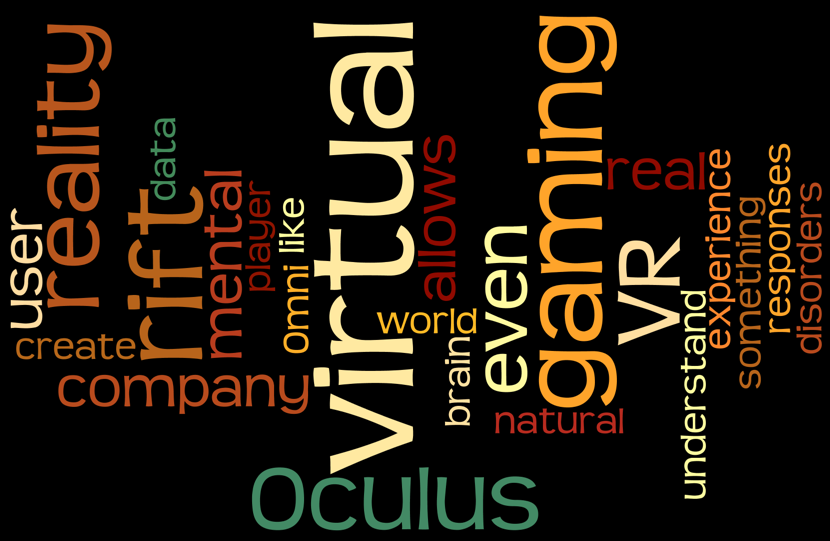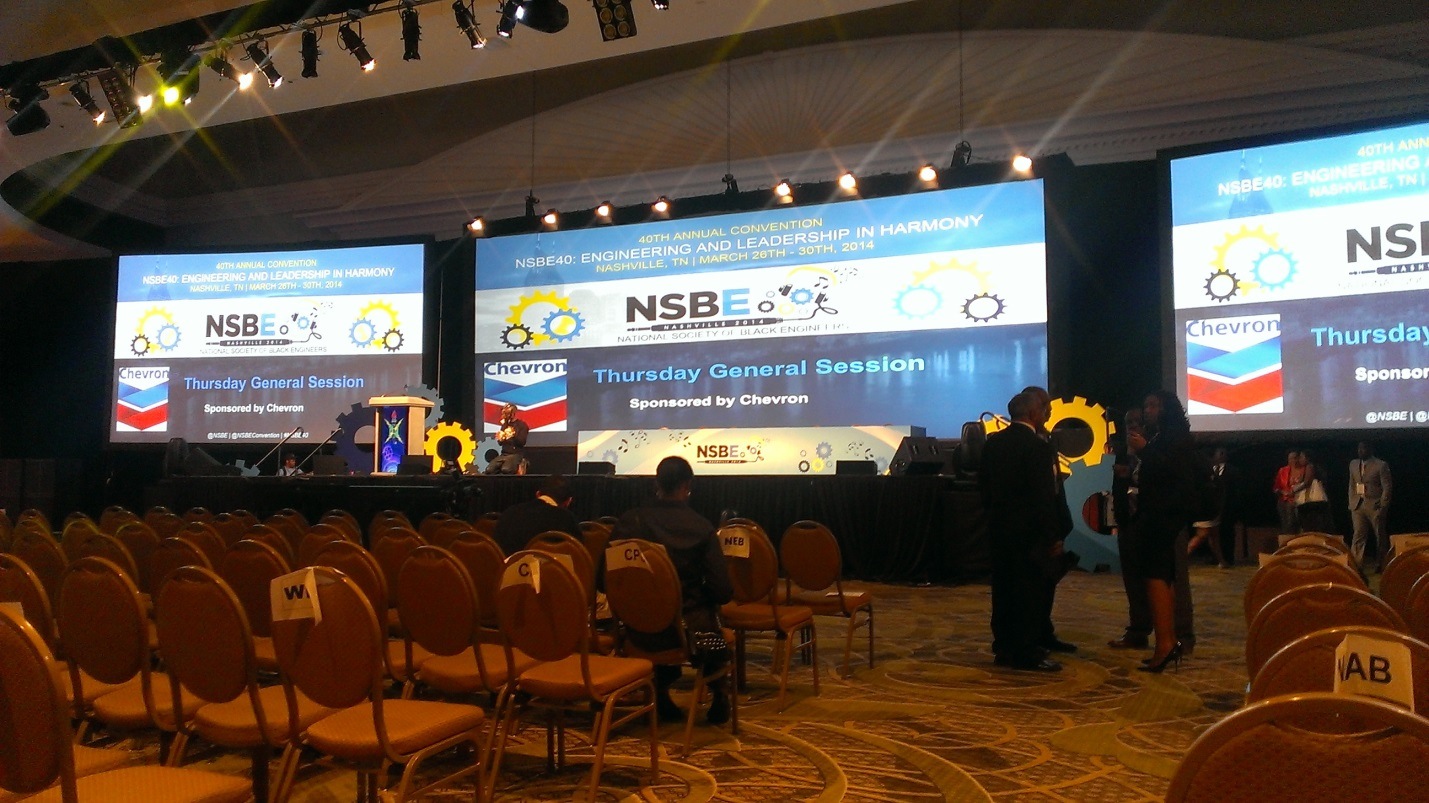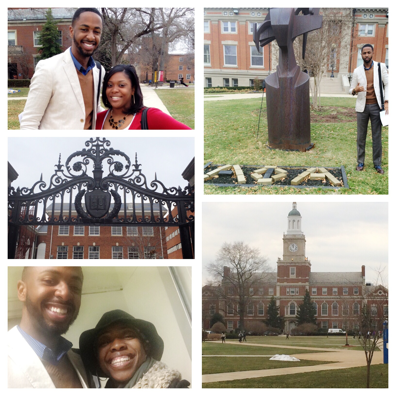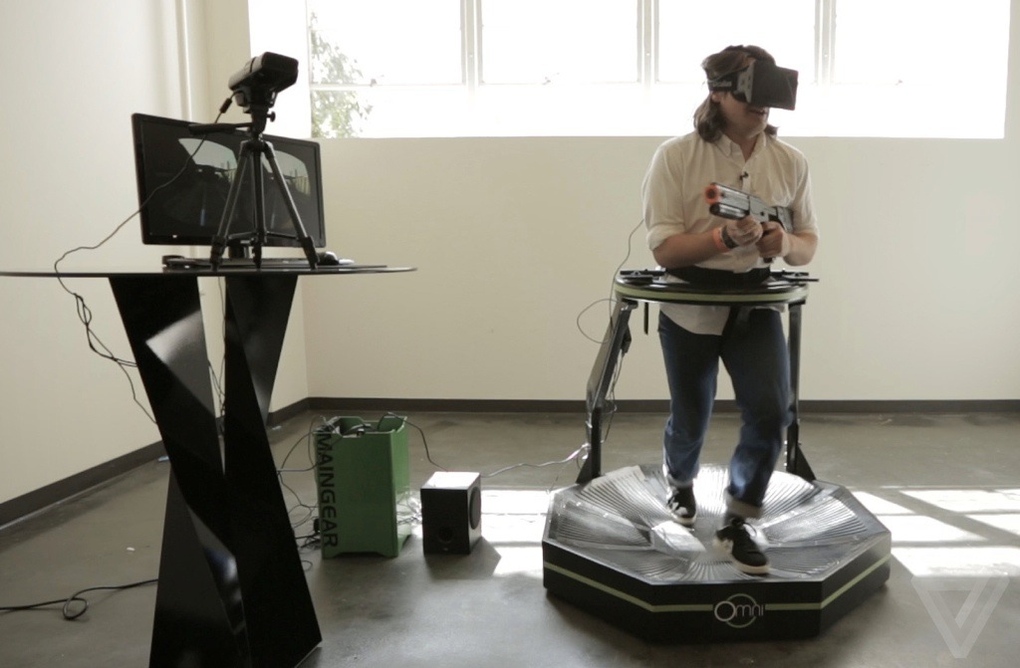myHIN Blog
Category: STEM Articles

July 17, 2014
When Gaming Is Too Real
There’s been a recent spike in in virtual gaming; virtual reality (VR) gaming that is. One of company at the forefront for VR gaming is a company named Oculus VR. Oculus VR’s leading product is the Oculus rift, which has the potential of bringing the world of virtual reality gaming to our very own living room. Oculus rift has received so much positive feedback other company’s such as Avegant gyph, Infinite Eye, and even Sony are already refining their R&D departments for this exploding market. Though a very cool concept what is it actually doing to your brain? Will our brain even be able to decipher between real and virtual?
To understand this, we must understand how virtual reality units like Oculus rift succeed. The rift comes with a headset that fills the user’s range of vision. This essentially means using your peripheral sight as well as determining depth and translating that to natural responses. These natural responses can then create data used to interact with the video game. To create a sense of real time motion a gyroscope and accelerometer are built into the headset collecting data. The user also wears a set of headphones which allows the user to hear everything that happens in gameplay.
The real “magic” of the rift is how it creates a sense of presence in our minds. This sensation is made by our brains prior experience of what of something is and sensory detail of what something’s supposed to do. Omni is another application of virtual gaming, but this takes a more physical approach. Omni essentially allows a player to run, walk, and jump while in their virtual reality experience. The device itself is stationary, but a harness and slick low friction grooved surface allows the player to almost move seamlessly through a virtual reality gaming environment.

So what’s the problem? Well, nothing at this point. Some are even looking into how devices such as oculus rift have the potential to treat mental disorders like Post Traumatic Stress Disorder (PTSD). VR bring a whole new world of treating mental health disorders or even improve someone’s mental abilities.
Share

July 10, 2014
Road to Medical School
With less than one week until I take my MCAT, I’m starting to understand the importance of staying mentally sane and stress-free. My whole summer has been leading up to this point. Though my road to Medical School is far from over, performing well on this exam will make the process a little bit smoother. For the last week, I have made sure to take time out for myself. Though I have maintained the same study habits and schedule, I have made it an addition priority to take time to relax and not overwhelm myself with everything the MCAT entails.

Sometimes knowing all the information does not automatically mean you will do well. It means you are prepared with understanding the majority of the topics. As I reflect and count down the days, I continue to tell myself over and over again, that all things are possible through Christ. I continue to build confidence in myself and in my ability. If I continue to have a positive attitude, then I shall receive positive results. At the end of the day, there are going to be some concepts I may not fully understand or certain areas I may need to excel better in; either way, I have to remain confident and not allow those struggles to hinder my success.

Nevertheless, I can honestly say that I have taken all the necessary steps to prepare for the MCAT. I’ve purchased review books, taken several practice tests, hired a tutor, improved my time management and study skills, and most importantly, asked for help when I needed it. At the end of the day, on July 12th, 2014, I am going to walk into my exam with confidence. For anybody preparing for the MCAT and applying to Medical School, know that the journey is not easy. If it was easy, anybody could do it. Just remember that you have to stick to a schedule and a plan that works best for you. Seek help and advice when necessary, but DO NOT compare yourself to others. When you do that, you become more worried about others and how you compare to them, and not what you need to do to improve yourself. Remember that your happiness comes first. If you find yourself struggling or becoming overwhelmed, take a step back, refocus, and find what work best for you. Medical School and the MCAT are not going anywhere. Take all the time you need to prepare and build the confidence you well need to do well and be successful on your road to medical school.
In closing, I leave you with this: 2 Chronicles 15:7 “But as for you, be strong and do not give up, for your work will be rewarded.”
Share

April 23, 2014
NSBE 40
This past month I had the opportunity to attend the 40th Annual National Society of Black Engineers (NSBE) national convention which was held in Nashville, Tennessee. The purpose of the national convention is to attend useful workshops on becoming a better leader, attending the career fair for various job opportunities and most importantly voting on our new regional and national leadership positions. Throughout the convention, there was a reoccurring theme of women in leadership, which ties in very well with women’s history month as well as our theme of women’s health. I didn’t notice until the second day that we not only had a majority of women speakers, but a “Woman in Leadership” panel. This was a great experience and I’m glad I could experience with my chapter members.
Below are some quotable to wrote down during the conference.
“Don’t focus on success, but on significance.”
“Stop looking at the process of how we make something and look at the product.”
“Do nothing absolutely alone.”
“Treat everyone fairly; you don’t know who’s crazy.”
“Remember that relationships matter.”
“To use people isn’t wrong, to misuse people is.”

Follow @myhealthimpact on Twitter and myhealthimpact on Tumblr where women’s leadership is a recurring theme.
Share

April 08, 2014
Visit to Howard University
Graduation is quickly approaching and it’s time to decide what I’m going to do after I leave NC State. Graduate school is definitely my next move. Since Dr. Payton is truly invested in the future of her students, she scheduled a day where my friend Keiara and I could visit Howard University. Located in Washington DC, Howard is an extremely prestigious HBCU- which stands for historically black colleges and universities. The university currently ranks third in the nation for HBCUs to attend in the US. After being informed about this trip, I became excited to experience what a day at an HBCU feels like.
Upon arrival at Howard University, we were greeted by Dr. Morgan. She was very welcoming and definitely made me feel like family. One thing I can say that Dr. Morgan and Dr. Payton are both women of structure. They had an itinerary set up for Keiara and I to follow during our visit. The first item on the list involved speaking to someone who worked in admissions for the School of Business. The woman who we spoke with was very informative and provided much insight on the different programs within the Business School. She also expounded upon Howard’s efforts in partnering with universities globally to encourage students to study abroad. I studied abroad the summer of my freshmen year at NC State and it was one of the best experiences in my life. I would definitely enjoy traveling again to study in another country while pursing my master’s degree. After the information session, we attended a “Wall Street on Campus” session. Though I got a little lost during the presentation, it was great to hear a company representative speak on various aspects of corporate business. At the completion of the presentation, we went on a self-guided tour of campus. While on the tour, I met some of my fraternity brothers from the Beta Chapter of Alpha Phi Alpha Fraternity, Incorporated. It was also neat to see all of the fraternity and sorority plots in the center of campus. “The Quad” also called “The Yard” is Howard’s focal point and the center of campus life. This is similar to “The Brickyard” that we have at NC State. While on the tour, I met up with one of my friends who currently attends Howard. She showed us inside the fine arts department and took us into the art gallery, which really intrigued Dr Payton.
After we departed, we had lunch then got a chance to tour the Divinity School. The Divinity School is located about ten minutes away from main campus. Once we arrived there, we were welcomed by Ms. McDaniel. Alongside her were two current Master’s of Divinity students and one happened to be my fraternity brother. Both students gave Keiara and I a personalized tour of the facility and answered any questions we had. This was by far my favorite portion of the day because I’m seeking to obtain my Masters of Divinity once I graduate from undergrad. Right before we headed back to the airport, I was able to introduce myself to Dr. Pollard, III. He had a very genuine spirit and was knowledgeable about my home church that I grew up in as a child.
It truly means a lot when a professor invests their personal time into the lives of their students. Dr. Payton did just that for Keiara and I. I can’t thank her enough for the exposure and for the experience at Howard University. I will be submitting my application there for Divinity School. Who knows- I may be the one providing tours to prospective students in the future.

Follow @myhealthimpact on Twitter and myhealthimpact on Tumblr!
Share

March 04, 2014
Recline Vs. “Leaning In” Meaning for STEM Education & Careers?
What: Twitter Chat Moderator for Big Beacon #bigbeacon
When: March 5, 2014 at 8pm EST
Where: Follow us on Twitter @myhealthimpact and Dr. Payton's personal Twitter account @drfayonline.
See myhealthimpactnetwork.org on the web and follow on Twitter @myhealthimpact. Follow Dr. Payton at her personal Twitter account @drfayonline.

Facebook Chief Operating Officer, Sheryl Sandberg, has offered one perspective to address question of inclusive of women in the workplace. Her book, Lean In: Women, Work and the Will to Lead, speaks to family life and work balance. I am still unsure about the term “balance”. Rather, I see the notion as one of “integration” informed and/or influenced by intersectional dimensions of race, gender, class, first-generation, sexual orientation, etc. Yet, Lean In, also speaks to the need for women to take charge of their careers and push forward despite the “isms” that can and do exist. If you need a brief summary of the book, see this Lean In blogspot.
Many have found Sandberg’s call as placing the burden of change on women, speaking to the privileged and failure to recognize the nuisances’ women of color in the discourse. As Rosa Brooks of The Washington Post stated in her February 25, 2014 article, Sandberg connects to those with the resources to navigate, as she says, “all this Leaning In”. Brooks suggests that women should “recline” instead.
In STEM, I am interested to learn how can Lean In impact the education and career trajectories of those doing the leaning. If the text is indeed focused on women, what are the roles of men in the workplace, both academic and industry? This Twitter Chat links to the Big Beacon Manifesto: “The whole new engineer is authentically connected to with others”. Further, the manifesto encourages engineering education to embrace young people as whole-bodied and whole-brained individuals. The status quo will not go easily, but go it must.”
Questions to consider for the Twitter Chat that makes for an interesting discussion:
- How do you view the “Lean In” concept?
- How have you encouraged underrepresented and female students to “Lean In”?
- How is STEM different that other fields, and how can this impact STEM educational leadership views of those who “Lean In”?
- What biases (if any) result when women and underrepresented minorities “Lean In”?
- What are the potential penalties and rewards of leaning in for women, women of color and underrepresented groups?
- How can STEM education and the workplace better foster a “Lean In” approach?
- How can this concept be use to foster and support STEM leadership roles among women and underrepresented groups?
- What are your thoughts on “reclining”?
Share
In Partnership with: Poole College of Management, College of Humanities and Social Sciences, National Science Foundation, Penn State
Take Action, Get Tested: Find Your Local Testing Center Why Get Tested?

